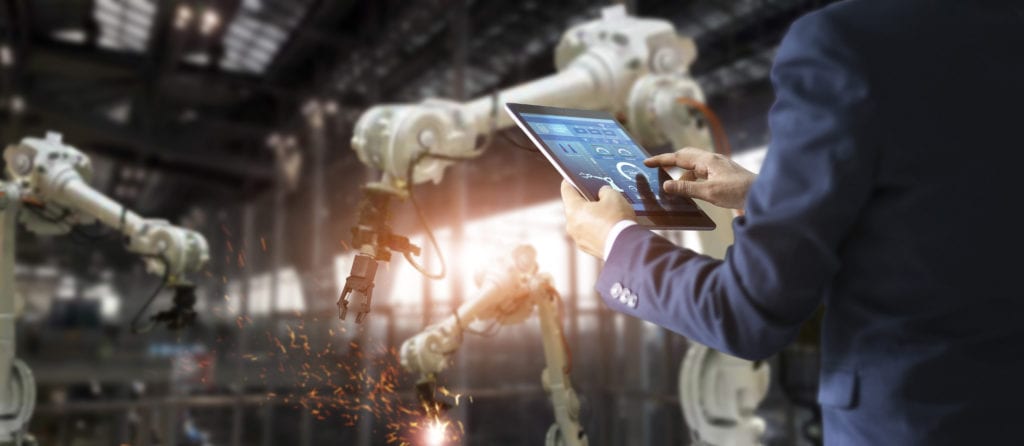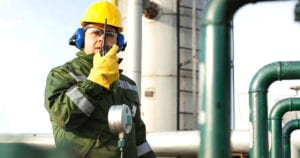
Peter Herweck, EVP, Schneider Electric Industrial Automation, is in charge of Schneider Electric’s global Industrial Automation Business since 2016. He has extensive experience in Automation, Digitization and Industrial Software. Peter started his career at Mitsubishi in Japan and after joining Siemens held several executive positions in Factory and Process Automation and headed Corporate Strategy.
 Craig Hayman, CEO, AVEVA, joined AVEVA in February 2018 as Chief Executive Officer. Previously he was Chief Operating Officer at PTC, where he had responsibility for engineering, marketing, and sales of the ThingWorx® platform, as well as computer aided design, and product lifecycle management solutions. Craig also served as President of the Solutions Group at PTC, where he led a resurgence in core solutions businesses, while driving sales of the company’s IoT technology platform.
Craig Hayman, CEO, AVEVA, joined AVEVA in February 2018 as Chief Executive Officer. Previously he was Chief Operating Officer at PTC, where he had responsibility for engineering, marketing, and sales of the ThingWorx® platform, as well as computer aided design, and product lifecycle management solutions. Craig also served as President of the Solutions Group at PTC, where he led a resurgence in core solutions businesses, while driving sales of the company’s IoT technology platform.
How to remotely control industrial operations and connect workers
The world has gone remote. Pandemic-driven lockdowns have forced industrial organizations across the globe to quickly adjust to highly unusual working conditions. Some have been more successful at transiting to the “new normal” than others. The thriving operations share something in common¾technology.
Remote workers need to access equipment from anywhere and at any time, and they need collaboration tools to connect with other remote team members and outside suppliers and customers. The more agile and resilient businesses use innovative technologies to deliver data into the hands of their remote workers, allowing them to make faster and more accurate decisions. As a result, they are also discovering new ways to better control capital spend and to reduce risk to their operations.
Remote operations and maintenance
Innovative technologies now make it possible to manage industrial operations and maintenance from almost any remote location. With the help of the industrial internet of things (IIoT), digital twins, cloud computing, and artificial intelligence (AI), industrial operations are overcoming supply chain, production, and distribution complexity obstacles by linking core processes into a unified digital environment.
Organizations like Schneider Electric and AVEVA provide the software, services, digital power and process physical infrastructure solutions that ease the transition to the world of remotely controlled operations and connected workers.
Driving innovation and worker engagement
We’ve identified three key success factors for empowering the remote, connected worker and driving operational resilience:
1. Industrial cloud computing
Providing remote access to data in a way that is secure, auditable, and safe, has emerged as a critical success factor for organizations pivoting towards a highly-effective connected workforce.
Accessing integrated data and analytics via powerful cloud-based analytical tools enables industrial workers and businesses to navigate new complexities with more agility. When data that reflects one common source of the truth is presented to workers in a context that is relevant to them, they are in a much better position to address issues and to drive efficiencies through collaboration. When workers all along the manufacturing value chain gain “at their fingertips” access to the same information, decision making is faster, more precise, and more profitable.
For example, ENEL, an multinational energy company active in the electricity generation and distribution sectors, recently developed a semi-autonomous plant using AVEVA digital twin technologies. Overnight, they were able to transition 30,000 of their workers in Italy to a remote working model. Key information from their core onsite systems was migrated to the cloud without any disruption to their operations. The technology investment ensured the continuity of their work, further strengthening the company’s overall operational resiliency.
-
Digital collaboration
With increased access to meaningful data comes the ability to drive more effective collaboration. New software now provides relevant and customized information in the form of data-driven dashboards that eliminate complexity while enabling virtual collaboration. Forward-thinking industrial operations use digital tools and cloud-based networks to collaborate virtually.
For example, Neste, the world’s leading producer of renewable diesel and sustainable aviation fuel, is developing chemical recycling to combat the plastic waste challenge. In their journey towards carbon neutrality by 2035, they are using digital innovation to drive sustainable outcomes throughout their business.
For more than ten years, Neste has steadily increased the volume of its renewable products. Today, the company has the capacity to produce 3.2 million tons of renewable products annually at its refineries in Singapore, Rotterdam and Porvoo, Finland but balancing supply of feedstocks and production of fuels across multiple global sites is complicated. Neste uses AVEVA Unified Supply Chain software to optimize and schedule renewable credits as well as reduce emissions from conventional refining and production of renewable diesels. The solution works across 80 sites to support optimal decision-making around supply and distribution, as well as production planning and scheduling. And since it’s a cloud deployment, the team can use data intelligence and analytics to make fast decisions from anywhere.
-
Artificial intelligence
In addition to big data shared in the cloud, teams are looking to digital tools to support them with remote inference, prediction, guidance and adaptation of operations. Relatively inexpensive cloud-based Artificial Intelligence tools are available at high scale and they are transforming how industries can operate. AI creates data-awareness and fills the gap of onsite reporting.
A great example of how this works is the deployment with oil sands producer Suncor, and US power provider Both companies use Schneider Electric hardware combined with AVEVA’s dynamic range modelling, prognostics tools, and AI-infused analytics to optimize processes across their assets. They combine data on everything from flow rates and volumes to shifts and operational planning.
Now, the leaders of both companies can detect unit failures early, identify potential production challenges or equipment failures before they occur, and optimize performance by shifting automatically to a different plant component to pre-empt and prevent the failure.
Using these tools has enabled Suncor to drive productivity and ensure higher production, optimizing the useful life of their portfolio. At Duke, the team saved US $34 million in a single AI-predicted operational catch. At both companies, workers can see and feel the benefits of using the new digital tools that enable them to make better decisions, collaborate in real time, improve safety, and drive sustainability throughout the operation.
To learn how Schneider Electric and AVEVA can help you thrive in a remote everything world, visit industrial software solutions.



